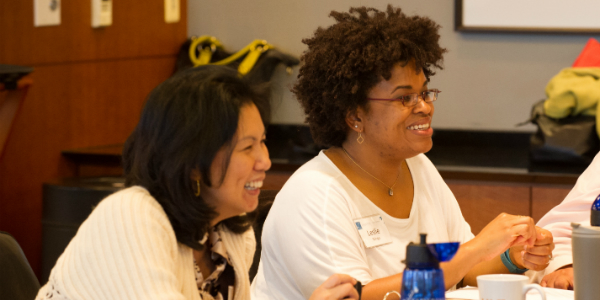
Guest post from ESSENTIAL Class of 2014 participant Leslie Wingo, reflecting on the December class day on Austin’s diversity and inclusion. Leslie is a partner with Sanders\Wingo Advertising.
—–
 We define others and ourselves by how we see the world and how we see our place in it. For as long as I can remember, I have always been “the only” one in the room. Often I feel as though I am the only female, the only African American or the only person who feels singled out. As I learned from our December ESSENTIAL class day, being the only one in the room is not a unique feeling. I learned that others seem to have the same feelings, and this shift in my perception is like jumping into Barton Springs on a hot Texas night—surprising and refreshing.
We define others and ourselves by how we see the world and how we see our place in it. For as long as I can remember, I have always been “the only” one in the room. Often I feel as though I am the only female, the only African American or the only person who feels singled out. As I learned from our December ESSENTIAL class day, being the only one in the room is not a unique feeling. I learned that others seem to have the same feelings, and this shift in my perception is like jumping into Barton Springs on a hot Texas night—surprising and refreshing.
The day had a lot of great content and reflection. Some of the information was new and unexpected. And some of it was really hard to hear. In my mind, I have been the only one for so long, it was great to get a different perspective from others who where the only one in their demographic or culture.
We each seem to have our own boxes, which shape how we are perceived and how we see the world. Ms. Joyce James explained during our session that this begins at a very early age as we learn to socialize with others. Think back to the last time you filled out the required paperwork for the U.S. Census. The form asks very specific information about what box you see yourself and your household fitting into. Needless to say, I have spent a lifetime of having people (including myself), advertisers, and others putting me into some type of labeled box.
There are over 170 of these types of categories (culture codes), which shape our opinions and beliefs. Culture codes are not monolithic and cannot be applied or assumed to the only people in a particular group, economic background or zip code.
Perceptions and assumptions about groups of people can be changed; however, there are many challenges such as institutionalized thinking, lack of resources, and historical policies and procedures, which prevent change or make it difficult at best.
In order to make positive changes within our community, we need to have honest and difficult conversations regarding race, diversity and inclusion. Stepping out of our own comfort zones and taking the time to listen to others who are different. As the demographic makeup of Central Texas continues to change, diversity and inclusion must work together in creating a cultural competency.
The ESSENTIAL Class of 2014 is comprised of sixty amazing and diverse individuals, who want to continue to make Austin and Central Texas a great place for everyone to live, work and play.
I cannot wait to see what The Best Class Ever will do this year.
—–
NOTE: The opinions of Leadership Austin alumni, faculty members, and guest bloggers are their own, and do not represent an official position of the organization.
